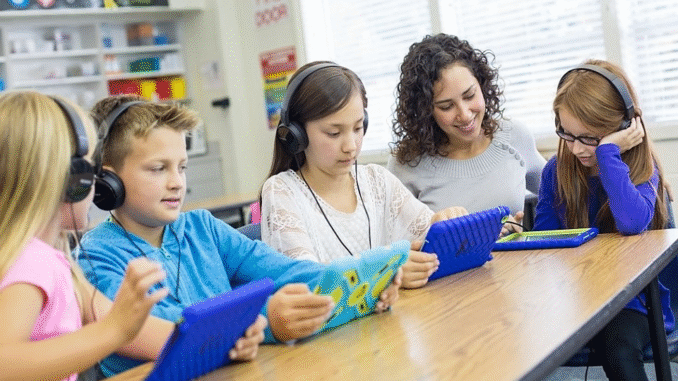
10 Innovative Teaching Strategies That Are Changing Classrooms in 2025
Education in 2025 is transforming at an unprecedented pace. As technology evolves and global challenges reshape our world, classrooms are adapting to new teaching methods that better prepare students for the future. Traditional chalk-and-talk approaches are being replaced or enhanced by innovative strategies that prioritize student engagement, creativity, and real-world application.
Here are 10 cutting-edge teaching strategies revolutionizing education in 2025 and beyond:
1. Personalized Learning Paths
With the help of AI and data analytics, teachers now create individualized learning paths for each student. These paths adapt to the learner’s pace, strengths, and areas for improvement. Personalized learning ensures no student is left behind and high achievers are continually challenged.
Example: Platforms like Khan Academy and Google Classroom use algorithms to recommend next steps based on quiz results and participation.
2. Project-Based Learning (PBL)
In 2025, more schools are integrating project-based learning to encourage collaboration, critical thinking, and problem-solving. Students work in teams to solve real-world problems or create presentations, products, or digital content.
Benefits:
- Enhances communication skills
- Builds teamwork and leadership
- Promotes active rather than passive learning
Example: A science class may build a sustainable garden to learn about biology, ecosystems, and environmental responsibility.
3. Gamification of Education
Gamification involves applying game design elements to learning activities. It makes education fun, increases motivation, and rewards progress through badges, points, or levels.
Tools:
- Kahoot! for quizzes
- Classcraft for classroom management
- Duolingo for language learning
Gamification encourages students to take ownership of their learning and strive for improvement in an engaging, competitive way.
4. Flipped Classrooms
In a flipped classroom, students watch lecture videos or review materials at home, then engage in hands-on activities, discussions, or problem-solving in class. This approach allows class time to be used for deeper understanding.
Advantages:
- Promotes active learning
- Encourages responsibility
- Supports peer-to-peer collaboration
Teachers act more as facilitators, guiding students as they apply their knowledge rather than just delivering it.
5. AI-Powered Tutoring and Feedback
Artificial intelligence tools now support students with instant feedback, 24/7 tutoring, and adaptive assessments. AI can analyze essays, solve math problems, and suggest ways to improve performance.
Examples:
- Grammarly for writing
- ScribeSense for automated grading
- Chatbots that provide academic help
Teachers save time on administrative tasks and focus more on student development.
6. Social-Emotional Learning (SEL)
Modern education emphasizes not only academics but also emotional intelligence. SEL helps students develop skills such as empathy, self-awareness, and resilience—critical traits in today’s interconnected world.
Strategies include:
- Mindfulness exercises
- Journaling
- Group discussions on emotions and relationships
SEL improves classroom behavior, reduces anxiety, and fosters a healthier learning environment.
7. Blended Learning Environments
Blended learning combines traditional classroom instruction with online learning. This hybrid model offers flexibility, a wide range of digital tools, and access to global content.
Benefits:
- Students learn at their own pace
- Content is accessible anywhere
- Encourages digital literacy
Platforms like Zoom, Microsoft Teams, and Canvas are now central to the daily classroom experience.
8. Experiential Learning and Field Simulations
In 2025, more schools are investing in experiential learning, where students gain knowledge through direct experience. This can include field trips, internships, lab experiments, or virtual reality (VR) simulations.
Examples:
- History students touring ancient Rome using VR
- Business students creating startup plans and pitching to real investors
- Science classes visiting nature preserves or industry labs
This method bridges the gap between theory and practice.
9. Culturally Responsive Teaching
Classrooms are more diverse than ever, and educators are adopting culturally responsive teaching practices. This strategy respects different cultural backgrounds and integrates them into the learning process.
Key aspects:
- Inclusive curriculum content
- Encouraging multicultural perspectives
- Reflecting student diversity in classroom materials
This creates a more welcoming and effective learning space for all students.
10. Competency-Based Education (CBE)
Instead of progressing based on age or time spent in class, students in CBE models move forward once they demonstrate mastery of a subject. This allows more flexibility and ensures students truly understand material before advancing.
Highlights:
- Encourages mastery rather than memorization
- Supports self-paced learning
- Clear goals and performance benchmarks
It is especially useful for adult learners and career education programs, where skill acquisition is critical.
The Future of Teaching Is Here
The teaching strategies being adopted in 2025 reflect a deeper understanding of how students learn best. Technology plays a key role, but the heart of education remains in human connection, creativity, and critical thinking. These innovative methods are not just trends—they are long-term transformations shaping the classrooms of the future.
As schools continue to adapt, educators, parents, and students must work together to embrace change and ensure learning remains meaningful, inclusive, and effective.
Final Thoughts
By adopting these 10 innovative strategies, educators are not only keeping pace with change—they’re leading it. Whether through AI-driven feedback, gamified lessons, or emotional learning, the future of education is more personalized, engaging, and empowering than ever before.
If you’re an educator, consider which of these strategies can be incorporated into your classroom today. If you’re a parent or student, embrace the opportunities these new methods offer to make learning a lifelong, enjoyable journey.
